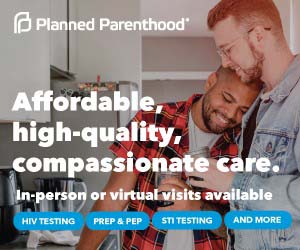Doctors at Temple’s Lewis Katz School of Medicine recently launched a series of training sessions to educate the school’s medical residents on providing culturally-competent care to transgender and nonbinary patients. These sessions are the result of the UNIQUE Project, which stands for Uniting in Inter-professional learning to serve the QUeer community through Education.
The goal of the project is to identify lapses in trans and nonbinary care at Temple Health, to foster knowledge and sensitivity for those groups and to recruit trans and nonbinary community advisors to impart their knowledge and lived experience to achieve those goals.
“We really asked the community what they thought was important, what they thought was lacking, what they thought was representative of the real issues that they and their community members experience when they interact with the health care system, and how we can bring that to an education and training opportunity for medical residents and office staff,” said Dr. Jamie Garfield, leader of the UNIQUE Project and director of the LGBTQ curriculum for the Internal Medicine Residency Program at the Katz School.
The board’s insight laid the groundwork for four cases based on the themes that arose in their discussions with Garfield and other Temple doctors. Four people who embodied a composite of the knowledge and lived experiences of the board members were at the center of each case, which were portrayed by trans and nonbinary standardized patients, who acted out the cases for the medical residents.
“The four cases that we built, we did attempt to try to hit some of the highlights of needs within the community, knowing that not one of these cases can stand alone, and that even all four of them don’t address every issue,” Garfield said.
The four standardized patient scenarios include a trans woman in need of HIV screening and hormone therapy; a trans-masculine person with depression and an eating disorder who’s interested in hormone replacement therapy and gender-affirming surgery; a person who identifies as intersex; and a nonbinary person who is older and needs to have conversations around menopause and end-of-life care in the context of non-traditional family structures.
Garfield noted that very few cases in medical literature exist that discuss intersex bodies and identities. A lot of the residents, she said, had trouble understanding what intersex variations include, what to consider when it comes to reproductive health and family planning for people who identify as intersex, or even how to address someone who identifies as intersex.

“Medicine is pretty binary and bio-essentialist,” said Scout Silverstein, an agender and intersex-identified person who sat on the board of the UNIQUE Project and who co-authored the paper on which the research is based. “There’s quote unquote female organs, male organs. There’s not a lot of discussion of the natural biodiversity of sex traits, and how holistically assessing someone’s sex traits yields more precision medicine and medical accuracy than simply going by what is on someone’s birth certificate or ID.”
Silverstein explained that lab results are typically measured according to a male or female sex marker. If a certain hormone level is higher in an individual who may identify as intersex or inhabits traits that fall outside what is considered a biological binary, their result may be considered clinically out of range according to the sex marker, but normal for the individual in question.
“If we’re holistically assessing someone’s sex traits, it may not actually be abnormal; it may be within their biologically appropriate range,” Silverstein said. “But med students aren’t taught that.”
Quinn Willer, a transmasculine, nonbinary person who also sat on the UNIQUE Project board, said that they believe that medical providers often tell trans and nonbinary people what’s best for them when it comes to gender-affirming care.
“I think, especially as a trans person, there are specific things that we know that we have to say in health care to get the care that we need, even if it’s not necessarily what our thoughts and feelings are,” Willer said. “Being able to be honest in a space about what things genuinely look like for us — and not what other people say that we should say — I think was really important because it just helps break ignorance.”
Some of the most significant gaps in trans-competent care, in Willer’s opinion, are basic things like getting a patient’s name and pronouns right, and for providers not to make assumptions when trans and nonbinary patients come to them with a specific issue in mind.
“Obviously not [for] all physicians or healthcare providers, but there is a tendency for [doctors] to make assumptions about what you want for your body, what you want in your life when you come out to a health care provider, when it’s not necessarily what you want,” Willer said.
Roughly five to 10 years ago, when people wrote letters of support for gender-affirming care “using shared decision-making with the patient,” Silverstein explained, they would misgender people on purpose because they were scared that insurance providers would not cover the surgery if they saw they/them pronouns.
“Insurance in the medical industrial complex at the time viewed medical transition as a binary and linear process,” Silverstein said. “Now, there’s a growing number of gender nonbinary and gender-expansive people who do not align themselves with a gender binary or trans binary gender. [A lot of trans people are scared] of disclosing with specificity what their experiences and their goals are because they may not be met with a medical provider who respects, understands and knows how to support what they want. There’s a lot of code-switching or shifting language and description of medical complaints or medical goals to try to adhere to what the medical system allows for.”
As such, a lot of nuance and complexity went into creating the standardized patient scenarios, Silverstein said.
While participating in the scenarios, the residents learned a great deal, got things wrong at times but “really enjoyed the opportunity to understand where they have knowledge gaps, to practice making a mistake but identifying it quickly, and in a compassionate, empathetic, understanding way, correct it,” Garfield said.
Going forward, Garfield hopes that the UNIQUE Project will continue for Temple’s internal medicine residents. She modified the standardized patient scenarios to be able to offer them to medical students as well. From there, the long-term goal is to publish the data that resulted from the cases so that other medical institutions can incorporate it into their teaching methods.
“I’m really proud of what we created and I want more people to use it,” Garfield said.
